|
|
|
 |

 |
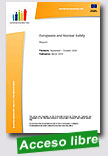 |
Europeans and Nuclear Safety
European Commission - Special Eurobarometer, March 2010, 168 p.
Most Europeans believe that nuclear power plants can be operated safely but still think they are a "risk", according to an extensive Eurobarometer survey.
The results of the survey of 26,470 European citizens across all 27 European Union member states, carried out in September and October 2009, have now been published by the European Commission in a 168-page document, Europeans and Nuclear Safety.
|
While 59% of the Europeans surveyed felt that nuclear plants can be operated safely, most believed that the risks related to nuclear energy are underestimated, with a lack of security against terrorist attacks on power plants and the disposal and management of radioactive waste identified as the major dangers. Not surprisingly, then, the vast majority - 82% - agreed that it would be useful for nuclear waste management to be regulated at the European level.
Nevertheless, the majority of respondents recognised the value of nuclear energy as a means of decreasing dependence on energy imports, ensuring more stable and competitive energy prices, and helping to limit climate change. In fact, 17% of Europeans felt that nuclear's share of electricity generation should be increased (up from 14% in a similar poll from 2006), on top of the 39% (up from 34%) who felt that nuclear's current share should be maintained. Still, 34% felt that nuclear's share should be reduced (down from 39% in the 2006 poll).
Extraído de:
http://www.world-nuclear-news.org/NP-Europeans_happy_with_nuclear_plant_safety-3004107.html
|
 |
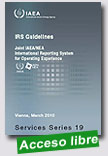 |
IRS Guidelines - Joint IAEA/NEA International Reporting System for Operating Experience
IAEA Services Series, 2010, 91 p.
The objective of this procedure is to help the user to prepare an IRS (International Reporting System) report on an event so that important lessons learned are most effectively transferred to the international nuclear community. This procedure focuses on the content of the information to be provided in the report rather than on its format.
Practically, it is recognized the compilation of the information for an event report is normally performed in a logical order different |
from the standard IRS report format. This is reflected in the procedure.
For events where human performance is dominant to draw lessons, more detailed guidance on the specific information that should be supplied is spelled out in the procedure. This guidance differs somewhat from that for the provision of technical information, and takes into account that the engineering world is usually less familiar with human performance analysis than with technical analysis.
The web based system is designed to assist IRS National Co-ordinators in sending IRS reports and it provides the structure for the preparation of a report. Information on how to use the web based IRS is described in the IRS manual and is not part of these guidelines. In order to facilitate the use of the present procedure, the basic process it describes has been summarized in a flowchart.
Extraído de:
http://www-pub.iaea.org/MTCD/publications/PDF/svs_019_web.pdf
|
 |
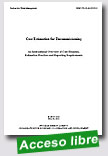 |
Cost Estimation for Decommissioning
Nuclear Energy Agency (NEA - OCDE), 2010, 80 p.
This report is concerned with exploring current practices on decommissioning cost estimation, having the dual goals of gaining a better understanding of the primary cost elements, including their definition and derivation, and experience of what can go wrong. The underlying study was established on the basis that a better understanding of decommissioning costs should lead to improved cost estimates for existing nuclear power plants and facilities, facilitate funding, and generally
|
enable better control of decommissioning costs. The report also considers the role of national report requirements and the implication of these for comparing differente estimates.
Extraído de:
http://www.nea.fr/rwm/reports/2010/nea6831-cost-estimation-decommissioning.pdf
|
 |
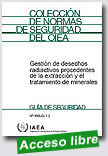 |
Los desechos radiactivos generados en las actividades de extracción y tratamiento, sobre todo las relacionadas con los minerales de uranio y torio (U, Th) difieren de los generados en las centrales nucleares y la mayoría de las otras operaciones industriales y en las instalaciones médicas. Los desechos procedentes de las actividades de extracción y tratamiento contienen sólo bajas concentraciones de materiales radiactivos, pero se producen en grandes volúmenes en comparación con los desechos de otras instalaciones. Los
|
métodos de gestión que han de emplearse son, por tanto, diferentes y suelen entrañar la disposición recuperable en la superficie o cerca de la superficie, en las inmediaciones de las minas y/o los emplazamientos de las fábricas. Además, los desechos contienen radionucleidos de período largo, y esto tiene importantes repercusiones para su gestión dados los intervalos de tiempo prolongados en que se hará necesario su control.
Los desechos radiactivos se producen en todas las etapas de los procesos de extracción y tratamiento y comprenden, además de los residuos de tratamiento, roca estéril1, roca estéril mineralizada2 y aguas industriales, incluso soluciones de lixiviación. También deberían gestionarse la precipitación y el escurrimiento por fusión de nieve, así como el agua infiltrada de las existencias y las zonas de plantas de procesamiento de uranio.
Los peligros para los seres humanos o el medio ambiente que plantean la extracción y el tratamiento de los desechos no sólo se derivan de su radiactividad, sino también de la presencia de productos químicos tóxicos y otros materiales presentes en los desechos. El logro de un enfoque reglamentario congruente para la protección contra estos distintos peligros constituye un desafío para los reguladores nacionales. La presente publicación trata fundamentalmente sobre la gestión de los peligros radiológicos asociados con los desechos, aunque también se indican los casos en que se hace especialmente necesario que los reguladores tomen en cuenta los peligros no radiológicos.
Extraído de:
http://www-pub.iaea.org/MTCD/publications/PDF/Pub1134s_web.pdf
|
 |
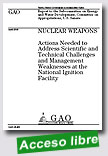 |
Nuclear Weapons: Actions Needed to Address Scientific and Technical Challenges and Management Weaknesses at the National Ignition Facility
General Accountability Office (GAO - US), April 2010, 37 p.
In March 2009, the National Nuclear Security Administration (NNSA), a separately organized agency within the Department of Energy, completed construction of the National Ignition Facility (NIF). NNSA considers NIF critical to its stockpile stewardship program to ensure the safety and reliability of the nation’s nuclear weapons, absent live nuclear testing. NIF is intended to simulate the extreme temperatures and pressures of
|
“ignition”—an atomic fusion event propagating a nuclear explosion—for the first time in a laboratory. GAO was asked to examine (1) the extent to which NNSA has addressed key scientific and technical challenges that could prevent ignition at NIF; (2) whether NNSA has an effective approach for managing the cost, schedule, and scope of ignition-related activities; and (3) potential impacts to NNSA’s stockpile stewardship program if ignition at NIF is not achieved, as planned, between fiscal years 2010 and 2012. To conduct this work, GAO analyzed relevant budgets, reports, and plans, and interviewed NNSA and national laboratory officials and independent experts.
GAO recommends that NNSA take actions to improve its effectiveness in (1) using outside experts to advise on scientific and technical challenges—by ensuring, for example, that the new committee reports to NNSA and advises on ignition activities early—and (2) managing NIC’s cost, schedule, and scope. NNSA agreed with the recommendations.
Extraído de:
http://www.gao.gov/highlights/d10488high.pdf |
 |
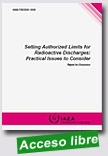 |
Setting Authorized Limits for Radioactive Discharges: Practical Issues to Consider - Report for Discussion
IAEA TECDOC Series, 2010, 82 p.
Radioactive waste is generated in a broad range of activities involving a wide variety of materials. The wastes arising from these activities have differing physical, chemical and radiological characteristics. This publication gives guidance on the storage of solid, liquid and gaseous radioactive wastes in a wide range of facilities, including those at which waste is generated, treated and conditioned.
|
Contents: 1. Introduction; 2. Protection of human health and the environment; 3. Roles and responsibilities; 4. Common safety considerations for waste storage facilities; 5. Design and operation of small storage facilities for radioactive; 6. Design and operation of large storage facilities for radioactive; Appendix
Extraído de:
http://www-pub.iaea.org/MTCD/publications/PubDetails.asp?pubId=8312
|
 |
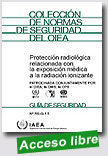
|
Protección radiológica relacionada con la exposición médica a la radiación ionizante
IAEA, 2010, 99 p.
En la presente Guía de Seguridad se formulan recomendaciones sobre la aplicación práctica del Apéndice II (Exposición médica) de las Normas básicas internacionales de seguridad (NBS) para la protección contra la radiación ionizante y para la seguridad de las fuentes de radiación, patrocinadas conjuntamente por la Agencia para la Energía Nuclear de la Organización de Cooperación y Desarrollo Económicos (AEN-OCDE), el OIEA, la Organización de las Naciones Unidas para la Agricultura y la Alimentación (FAO), la Organización
|
Internacional del Trabajo (OIT), la Organización Mundial de la Salud (OMS) y la Organización Panamericana de la Salud (OPS).
La guía se publica bajo el patrocinio conjunto del OIEA, la OMS y la OPS. En ella se recomiendan estrategias dirigidas a promover la participación de las entidades, por ejemplo los organismos profesionales, cuya cooperación es esencial para asegurar el cumplimiento de los requisitos de las NBS relativos a las exposiciones médicas. Los ámbitos en que esta cooperación es necesaria son, entre otros, el establecimiento de niveles orientativos para las exposiciones médicas con fines diagnósticos, los procedimientos de prueba para la aceptación del equipo radiológico, la calibración de los aparatos de radioterapia y la notificación de las exposiciones médicas accidentales.
Extraído de:
http://www-pub.iaea.org/MTCD/publications/PDF/Pub1117s_web.pdf
|
 |
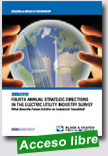 |
2009/2010 Strategic Directions in the Electric Utility Industry Survey
Black & Veatch, 2010, 93 p.
This year’s “Strategic Directions in the Electric Utility Industry Survey” results reflect the toll economic, regulatory and political conditions have taken on industry respondents. Both 2008 and 2009 have combined to create historic economic impacts on the utility industry. For the first time since the 1930s, capital spending on new electric infrastructure has declined for two straight years.
|
As a result, it appears the industry is returning to its “job one:” maintaining reliable service and preserving its financial health. This year’s survey results reflect this sentiment as reliability and long-term investment are among the top concerns of this year’s respondents
Extraído de:
http://www.bv.com/energysurvey/
Top 10 Industry Insights | Full survey results and analysis
|
 |
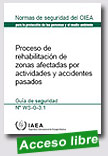 |
Proceso de rehabilitación de zonas afectadas por actividades y accidentes pasados
OIEA, Colección de normas de seguridad, 2010, 44 p.
El objetivo de la presente guía de seguridad es proporcionar orientación acerca de la aplicación de los requisitos para la rehabilitación de zonas contaminadas por actividades y accidentes pasados [1]. Está destinada a órganos reguladores y explotadores, así como a otros responsables de la rehabilitación de emplazamientos y, en caso de accidente, del proceso de recuperación.
|
|
 |
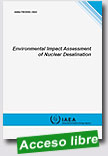 |
Environmental Impact Assessment of Nuclear Desalination
IAEA TECDOC Series, 2010, 141 p.
Nuclear desalination can be considered one of the most viable means of producing fresh water in arid areas. In the light of environmental concerns, this publication aims to improve the understanding of an important aspect of nuclear desalination. It provides an overview of the nature and magnitude of the environmental impacts of nuclear desalination. In addition to detailing experimental data and the experience gained in operating nuclear desalination projects, it highlights risks
|
perceived by the public. The publication encompasses environmental and socio-economic information provided by specialized sources including some Member States with extensive experience on operating nuclear desalination systems. Addressing these concerns can be of critical importance for the effective use of nuclear desalination full potential.
Extraído de:
http://www-pub.iaea.org/MTCD/publications/PubDetails.asp?pubId=8262
|
|
|
|
|
|
| |
|
|
|
|
|
